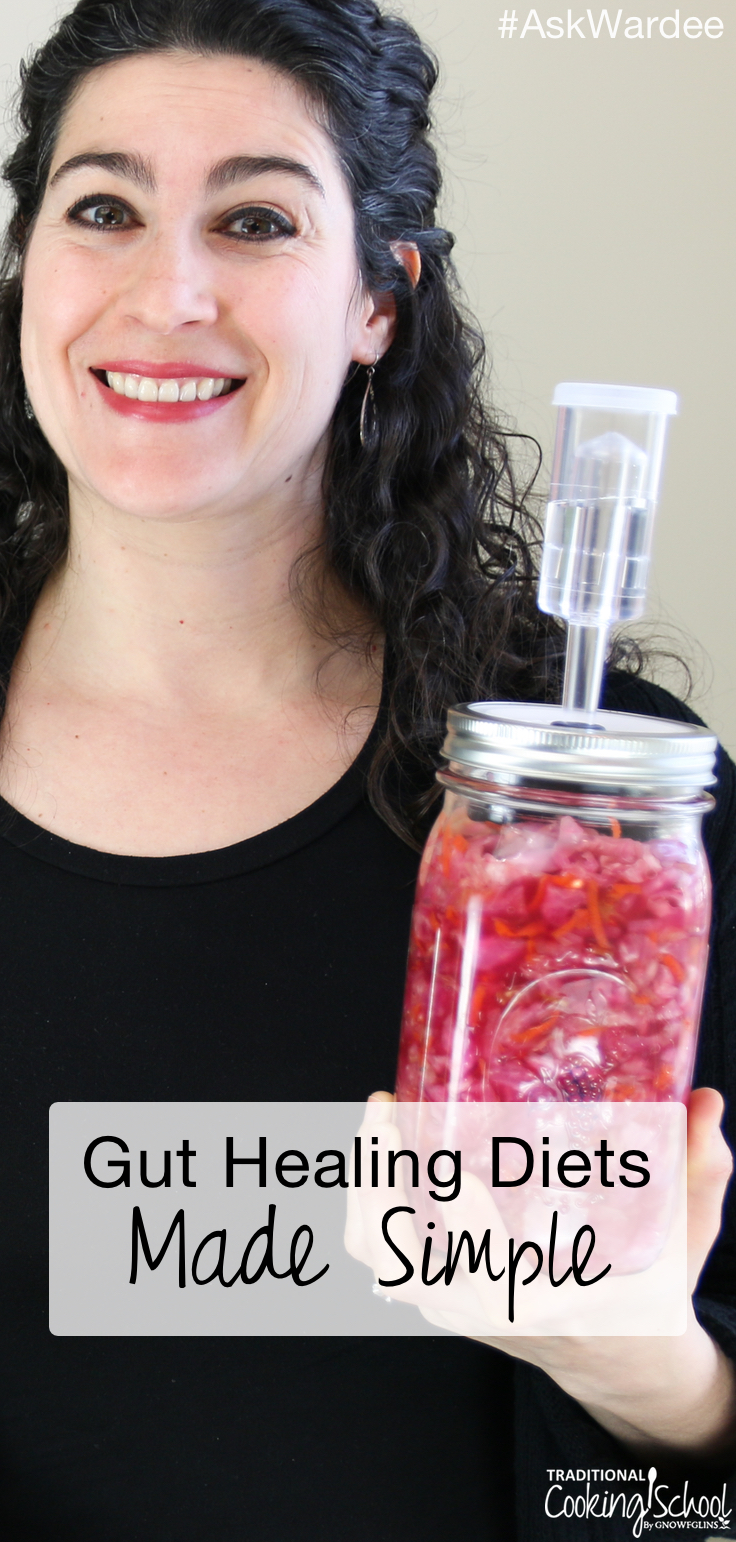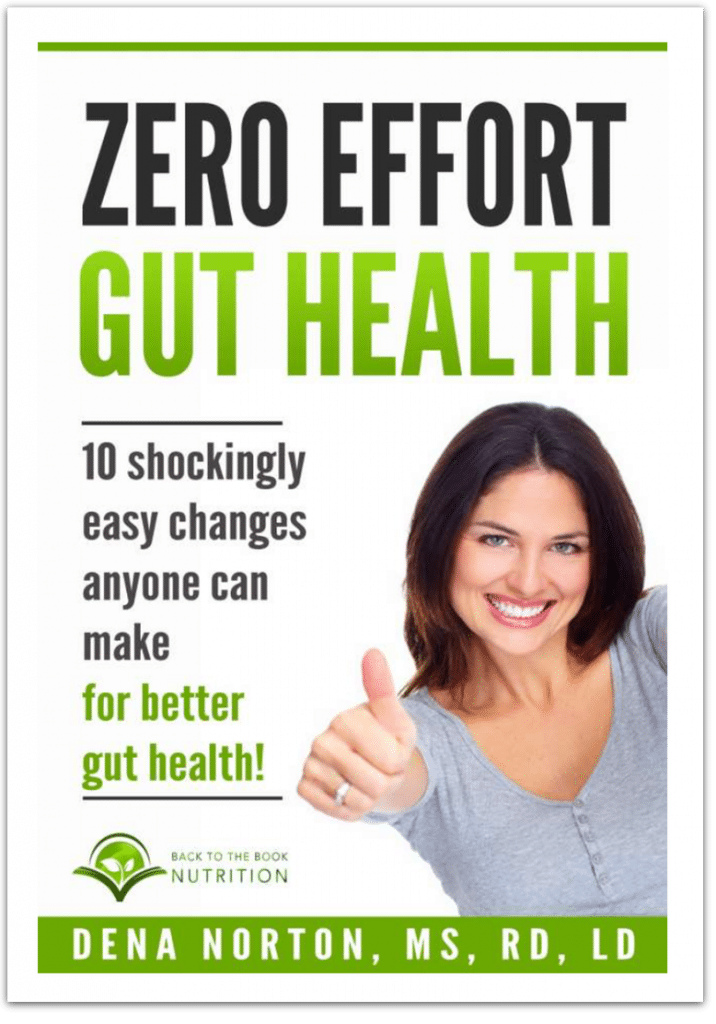
I could sing again…
I could wear contacts and perfume again…
Those were the unexpected benefits of healing my seasonal allergies!
You see, until my late 30s, I suffered from life-long, debilitating seasonal allergies. I can’t remember not having them. I dreaded spring and summer because of the pollen. Later in life, my allergies got so bad, I was having issues year round. Ugh!
The kind of allergies where I couldn’t function because I would sneeze over and over and over and over… all. day. long. My body wouldn’t stop.
If I didn’t take my allergy medicine upon waking, it would take a few hours for relief to set in.
And relief? The relief that allergy meds give is just a prison of another kind.
Sure, I wasn’t sneezing… but I was so dried up, I felt like a dessert.
So either way, I was miserable. And so was my family. It was hard to be around me. 😉
Then my life changed in the best way possible. I went on the GAPS Diet (a gut-healing protocol), and it healed my seasonal allergies — and I have been completely free of them for going on 5 years now.
A few days… that’s all it took for my allergies to go away. I stuck with the diet for a few months, though. And I still avoid modern wheat and sugar. (Here are my 7 tips for holiday baking while healing your gut.)
I was really skeptical going into it that it would work for me.
If you have any kind of condition or illness, I bet you feel the same. You’re so used to being that way that you can’t imagine the burden being lifted.
Right?
But now — having experienced the healing myself — I am such a huge believer that all our health is tied to the gut. And I want everyone to get to the bottom of their issues.
Some conditions are harder than others; I know that that my seasonal allergies were probably an easier case.
Yet, I believe that gut health is important for everyone! It can help the average person feel great and it can help the sickly feel average.
The trouble is… gut-healing diets can be complicated!
It’s a lot of information to wrap your head around.
That’s why today, we’re going to focus gut-healing diets made simple.
We’re going to talk through the basic things you need to know to embark on a gut-healing diet.
(And yes, I’ll share resources for more info…)
I’m so glad you’re here for this week’s #AskWardee!
I broadcast #AskWardee live each Wednesday at 10am Pacific (1pm Eastern) on Periscope and Facebook Live. Both the podcast and video replay of this week’s show are below. Enjoy!
Subscribe to #AskWardee on iTunes, Stitcher, YouTube, or the Podcasts app.
The Question: GAPS Is Overwhelming!
Believe it or not, I have about 10 questions in the queue on this topic!
I’ll just quote 1 of them. Brenna H., a dear in-real-life friend, asks:
I am starting to consider doing GAPS, but to be honest it’s utterly overwhelming. My questions are 1.) Have you tried it? 2.) What issues were you trying to address? 3.) How long did you stick with the protocol? And, 4.) Did you notice any improvement?
My Answer: Gut-Healing Diets Made Simple
Brenna, quickly — my answers to your questions 1 through 4 are:
- Have you tried it? Yes.
- What issues were you trying to address? Seasonal allergies.
- How long did you stick with it? About 3 months (I still avoid modern wheat and sugar, and I still eat gut-healing foods regularly).
- Did you notice any improvement? Absolutely — I’m completely healed for going on 5 years now.
You had another question in there, however. The “…but to be honest it’s utterly overwhelming” part.
I want to help you with that. Here are 4 easy steps to embarking on any gut-healing diet, not just GAPS. These are universal principles.
Knowing the basics gets you into the race, instead of stuck on the starting block. You can always get more complicated later. 😉
1. Cut Out The Sugar.
While every step we talk about today is important, this might be the key. Starve the undesirable organisms that are taking up residence in the gut by cutting out their food source.
They eat sugar. And not just white sugar — there’s sugar-sugar, starches in grains, and sugar in fruit.
One must stop eating all of this without delay.
It’s hard. Unfortunately, there may be a time of adjustment while the body goes through withdrawals. Which is why it’s so important to fill up on the good stuff. Like…
2. Eat Lots Of Fats, Cooked Veggies, Eggs, & Meats.
These are the foods you will eat and eat and eat to keep you satiated. It’s kind of like the Paleo diet (sans the sweets).
If you’re already eating whole foods, it’s easy to prepare meals by cooking a main dish meat and accompany it with a generous veggie side dish. And always serve both with healthy fats like ghee, butter, coconut oil, lard, or tallow.
Yes, work around allergies. Regarding the eggs, start with just egg yolks. (Egg whites are harder to digest and should be re-introduced later if you aren’t allergic).
Whatever foods you can eat in this category, eat up. You can also eat soaked or sprouted nuts and/or seeds, if you can tolerate them.
(Buy the best quality of all the foods you’re eating — pastured meats, organic veggies, etc.)
Also… 2 more food groups are necessary for healing:
3. Consume Animal Broths & Soft Tissues.
Broth is so soothing and provides nourishing (and protein-assimilating) gelatin, along with minerals.
Dr. Natasha Campbell-McBride, creator of the GAPS Diet, says this:
“Meat and fish stocks provide building blocks for the rapidly growing cells of the gut lining and they have a soothing effect on any areas of inflammation in the gut. That is why they aid digestion and have been known for centuries as healing folk remedies for the digestive tract.
Chicken stock is particularly gentle on the stomach and is very good to start from. To make good meat stock you need joints, bones, a piece of meat on the bone, a whole chicken, giblets from chicken, goose or duck, whole pigeons, pheasants or other inexpensive meats. It is essential to use bones and joints, as they provide the healing substances, not so much the muscle meats.
Strip off all the soft tissues from the bones as best as you can to later add to soups or encourage your patient to eat all the soft tissues on the bones. Extract the bone marrow out of large tubular bones while they are still warm: to do that bang the bone on a thick wooden chopping board. The gelatinous soft tissues around the bones and the bone marrow provide some of the best healing remedies for the gut lining and the immune system; your patient needs to consume them with every meal.”
Here are 8 ways to eat broth (without drinking it straight) and 5 ways to make your broth more exciting.
4. Eat Fermented Foods.
Starving the bad guys is one thing, but how can you re-populate your gut with the good guys?
Through fermented foods! Yogurt, kefir, sauerkraut…
A lot of people need to start slowly with these to avoid heavy detox symptoms. Do what your body can handle. Go slowly.
Bottom Line: Just 4 Things
Gut-healing diets made simple? Just 4 things…
- Cut out the sugar.
- Eat fats, cooked veggies, meat, and eggs.
- Consume animal broths and soft tissues.
- Eat fermented foods.
Yes, this is simplified.
I’m not trying to cover all the nuances that are in gut-healing resources or that you’d hear from a natural practitioner. I’m trying to give you the big picture of what gut-healing entails.
There are also: detox practices, supplements, small tweaks, working around allergies.
When you’re ready for that kind of info, even simplified and doable, there are many resources that can provide it. Like…
Want More Help For Healing Your Gut?
Right now and through Saturday, March 31, 2018 you can save 93% on a simply awesome collection of gut-healing resources — it’s the Gut Health Super Bundle.
Not only is my Lacto-Fermentation {mini} eCourse included — containing dozens of healthy, delicious homemade ferment recipes — you’ll also get 16 eBooks, 1 conference recording package, 4 other eCourses, and 3 video trainings.
So that’s 25 easy-to-use eCourses, eBooks, videos, and plans to take the overwhelm out of gut healing. To quote the image above!
I want to point out one of the eBooks: Zero Effort Gut Health. The author — Dena Norton, MS, RD, LD — shares 10 “shockingly easy changes anyone can make for better gut health!” After looking through it, I think it’s going to be really helpful for you!

I gave you 4 steps for making gut healing diets simple above — Dena breaks them out into 10. I love it when people provide simple explanations for overwhelming topics! If we’re overwhelmed, we don’t make progress. When someone simplifies it so we can get our heads around it… that’s when we start winning.
The whole Gut Health Super Bundle collection is worth over $700+ but you can get it for 93% off… click here for more info.
Helpful Links:
- 93% OFF Gut Health Super Bundle worth $700+ — hurry! it ends Saturday, March 31, 2018
- KYF #110: Help for Seasonal Allergies
- KYF #165: GAPS Made Simple
- All of our GAPS archives
- Thick Raw Milk Yogurt
- FREE Fermenting Cheat Sheet
- The GAPS Diet book
Are you following a gut-healing diet? How do you keep things simple?
We only recommend products and services we wholeheartedly endorse. This post may contain special links through which we earn a small commission if you make a purchase (though your price is the same).



My hayfever goot to the point that drugs didnt work any more so I started taking 1 tsp of local honey every day, it works better than any drug I have ever tried I get no syptoms at all ! After I think its 3 years you should be compleitly cured :o)
In the video you mention not only white sugar, but also starchy foods and grains. Does this include sucanat, molasses, honey and maple syrup? I have seen conflicting info, or maybe just mentions for different purposes. Are these “bad guy” food? Thank you!
Hi Heather,
GAPS diet allows honey but not sucanat, molasses or maple syrup. Grains and most starchy foods are also not on-plan for GAPS.
Other gut healing protocols might have different guidelines. 🙂
Millie, TCS Customer Success Team
Such a helpful and encouraging post, Wardee! And thank you for highlighting my eBook – I’m honored to have it included in such a fantastic bundle of resources!
It’s a great book, Dena! Thanks for sharing it with the world… so helpful! 🙂
I am new to your website and this was my first time watching one of your videos…it was very helpful, thank you!!! What a great resource. I’ve been working on healing my gut for over 2 years now, and I’m wondering, what kinds of fruit do you allow yourself to have? Thinking about how you mentioned cutting out all sugar…would this include apples, pears, and berries (my main fruit go-tos?) Also, would this include sweet potatoes and brown rice?
what do you do if you don’t eat meat?
What is your opinion on doing these things while breastfeeding? I already do some fermented foods, but I’m curious if completely cutting the sugar out and having the die off affect would not be a good idea right now.
Hi Nicole, I’m Megan Stevens, one of the writers for TCS and former GAPS Diet patient. Dr. Natasha-Campbell McBride encourages moms of every stage to enter into or continue the GAPS Diet. She does not address, however, those of us with serious die-off issues and what that would look like postpartum. She does emphasize taking care of yourself and resting a lot! That’s her big recommendation: rest, nap, tell others in your family why and how important it is. 2-3 naps a day, keep stress out, prevent becoming over-tired. As far as die-off, do you have any indication that yours will be particularly bad? Mine was particularly bad; I was in bed for 2 weeks, unable to get out because of the extreme weakness and exhaustion. (I was addicted to sugar and had profound pathogen overgrowth.) If yours would be that bad, I’d suggest you work with a GAPS practitioner, to be safe. If you only expect small bouts of die-off I’d personally jump into the healing diet right away. The foods recommended are the same ones that are best for your milk and your baby’s health: lots of animal fats, fresh meat, fish, eggs, fermented foods etc. I’d personally keep plenty of complex carbs in there, too, especially during the transition: winter squash, beets, carrots, soaked nuts and seeds in moderation.
I would like to know, does this allow milk and cheese products? What about potatoes (sweet and regular) and carrots? How about “artificial” sweeteners, like Splenda or stevia? Is it ok to eat the veggies raw? Thank you in advance!
Hi, Jeanetta: Most gut-healing diets (including GAPS) eliminate all dairy and grains, as well as nightshades (postatoes). Carrots and sweet potatoes are usually fine, but veggies should be cooked for ease of digestion. Splenda would not be acceptable, and honey is the preferred sweetener for GAPS. —Sonya, TCS Customer Success Team
Sonya, thank you for your reply. Can I ask, why is honey ok, when it is a sugar?
Honey — especially raw, organic honey — is less refined than other sweeteners and has anti-bacterial properties and other benefits. 🙂 —Sonya